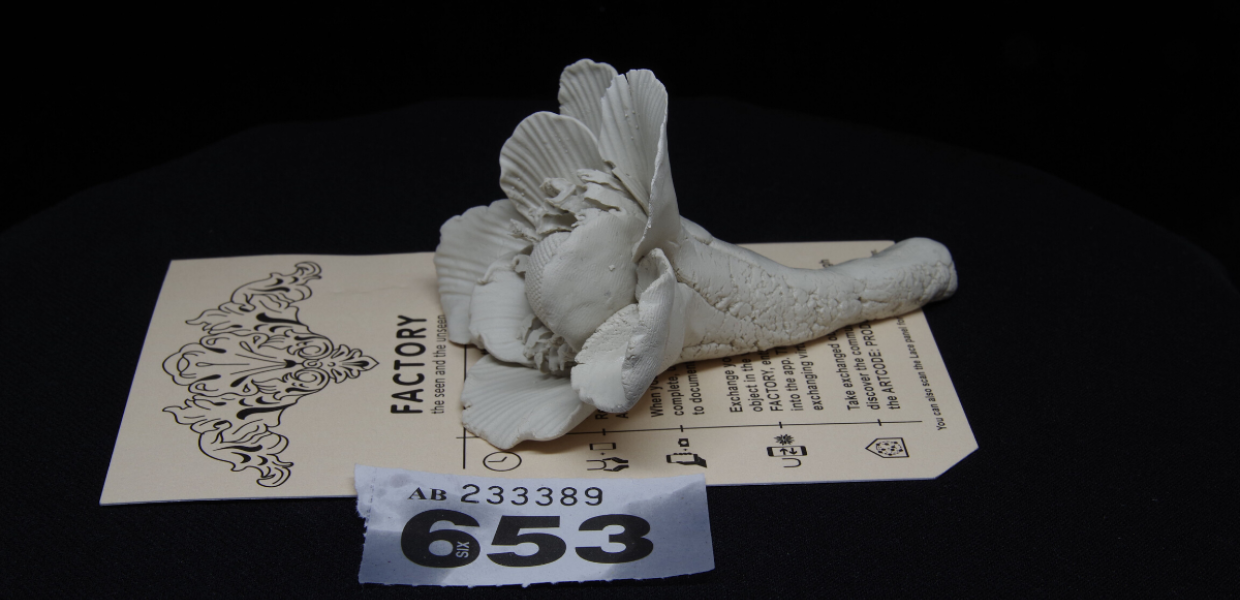ScannerBox: a free resource for 3D scanning
The advent of 3D technology is bringing new opportunities for the cultural heritage sector, offering innovative ways to provide access to heritage for education, tourism, research and enjoyment. However, it also throws up new challenges - how best to embrace 3D given access to new technologies and the speed of technological change? In this post Dimitrios Darzentas, Research Fellow at the Mixed Reality Lab of the University of Nottingham, tells us about the 3D ScannerBox, which was developed as part of the GIFT project and aims to provide a free resource for 3D scanning.

- Title:
- Mixed Reality Storytelling – Object 653 from Factory at the Tate
- Creator:
- Dimitrios Darzentas
- Date:
- 28/09/2017
- Copyright:
- CC BY-NC-SA
3D scanning in cultural heritage
Digitisation of content and artefacts is a key topic for the cultural heritage sector, whether for long-term preservation or to increase engagement and accessibility through the use of new mediums such as interactive and online exhibits.
3D scanning is increasingly becoming a mainstay of major preservation and research efforts to support this drive. Scanning processes can use several different technologies, including laser sensing, structured light projection, or computer vision-driven photogrammetry to generate highly accurate 3D models of real-world objects. These 3D models can then be used for archiving, research and in engaging interactive exhibits. Disciplines such as archaeology have employed them successfully for decades.
However, current 3D scanning technologies are often costly, both in terms of hardware and software investment and in time and skill requirements. This limits their use to those organisations that have the resources to obtain and maintain their own equipment and trained personnel or outsource the task to third parties.
ScannerBox aims to revolutionise this landscape by providing a free resource for individuals and organisations who are interested in employing 3D scanning for their own goals. The tool was developed as part of the GIFT project, a Horizon 2020 project that brought together internationally renowned artists, designers, museum professionals and researchers to help museums create hybrid experiences. Read more about the GIFT Project on Europeana Pro.
How ScannerBox works
ScannerBox uses the 3D scanning technique of photogrammetry. This technique uses photographs of real objects to generate photorealistic 3D models and as such does not require any hardware other than a camera – and any camera will do! In essence the process involves taking pictures of an object or environment from all possible (and feasible) angles, and then using photogrammetry software to generate the 3D models.
While photogrammetry sounds simple, the knowledge and methodical use of appropriate photographical tools can make the process easier, scalable and much more effective for creative and professional applications. With that in mind, ScannerBox offers essentially a workflow that, with a particular emphasis on the cultural heritage domain, aims to introduce readers to photogrammetry and guide them through all the necessary stages.
It is a one-stop resource that breaks down the necessary skills, demystifies the more esoteric computer vision aspects, outlines recommended equipment and software, and presents several successful case studies where the workflow was applied. The aim is to share the accumulated knowledge we have gained from using photogrammetry in several creative projects and endeavours and popularise the use of the technique by self-reliant individuals and organisations.
